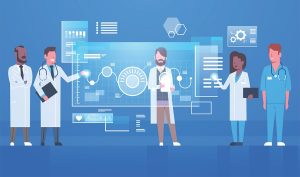Introduction In today’s fast-paced digital world, traditional methods of learning are undergoing a significant transformation. With the advent of technology, especially video learning platforms, education has become more accessible, engaging, and personalized than ever before. Unlocking Potential: The Power of a Video Learning Platform is immense, offering learners an interactive and dynamic educational experience. Let’s
Introduction
In today’s fast-paced digital world, traditional methods of learning are undergoing a significant transformation. With the advent of technology, especially video learning platforms, education has become more accessible, engaging, and personalized than ever before. Unlocking Potential: The Power of a Video Learning Platform is immense, offering learners an interactive and dynamic educational experience. Let’s delve deeper into how these platforms are revolutionizing education.
Video Learning Platforms Engagement and Interactivity
Video learning platforms offer dynamic and engaging content that captures learners’ attention. Through multimedia elements such as animations, graphics, and simulations, complex concepts are presented in a visually stimulating manner, enhancing comprehension and retention. These platforms employ algorithms to analyze learners’ preferences and performance, delivering personalized recommendations and tailored learning pathways. By catering to individual needs and interests, video learning platforms optimize the learning experience, fostering greater motivation and success.
Video Learning Platforms Challenges Faced
While video learning platforms offer numerous benefits, they are not without challenges. Technical issues such as slow internet connections, buffering, and compatibility issues may hinder the learning experience and frustrate users. Ensuring the quality of educational content on video learning platforms is essential. With the proliferation of user-generated content, maintaining standards of accuracy, relevance, and credibility becomes paramount. One aspect of traditional education that video learning platforms may struggle to replicate is social interaction. Collaborative learning environments and face-to-face interactions with instructors and peers contribute significantly to the learning process and may be lacking in online settings.
Virtual Health Assistants:

Image By : Yandex
AI-powered virtual health assistants, such as chatbots and virtual nurses, are revolutionizing patient engagement and support. These virtual assistants can provide patients with personalized health advice, medication reminders, and answers to common medical queries, enhancing accessibility to healthcare services and promoting self-management of chronic conditions.
Drug Discovery and Development:
AI accelerates the drug discovery and development process by analyzing vast datasets and predicting the efficacy and safety of potential drug candidates. AI algorithms can identify novel drug targets, optimize drug formulations, and facilitate the repurposing of existing medications for new indications, ultimately expediting the delivery of life-saving treatments to patients.
Understanding Video Learning
Video Learning, also known as e-learning or online learning, refers to the use of digital video content to deliver educational material. This dynamic approach allows learners to access information anytime, anywhere, using various devices such as computers, smartphones, or tablets.
Breaking Boundaries
One of the most significant advantages of Video Learning is its ability to transcend geographical limitations. With access to the internet, learners from all corners of the globe can connect with educational resources, breaking down traditional barriers to learning.
Enhancing Engagement
Video Learning offers a multimedia-rich experience, captivating learners through interactive content, animations, and real-world examples. This engagement fosters deeper understanding and retention of information, making learning more effective and enjoyable.
Challenges and Considerations:

Image By: Yandex
Despite its transformative potential, the widespread adoption of AI in healthcare is not without challenges. Concerns related to data privacy, algorithm bias, regulatory compliance, and the ethical implications of AI-driven decision-making require careful consideration. Moreover, the integration of AI into clinical practice necessitates ongoing education and training for healthcare professionals to ensure proficiency and trust in AI-enabled technologies.
Accessibility and Inclusivity
Unlocking Potential: The Power of a Video Learning Platform extends beyond traditional educational boundaries, offering accessibility and inclusivity to learners worldwide. These platforms break down barriers to education by providing content in multiple languages, accommodating diverse learning abilities, and offering closed captioning and transcripts for individuals with disabilities. By fostering a culture of inclusivity, video learning platforms empower learners from all backgrounds to thrive academically.
Conclusion:
Artificial Intelligence holds immense promise for revolutionizing healthcare delivery, diagnosis, treatment, and patient outcomes. By harnessing the power of AI-driven technologies, healthcare providers can improve diagnostic accuracy, personalize treatment approaches, streamline workflows, and enhance patient engagement. However, realizing the full potential of AI in healthcare requires addressing challenges related to data privacy, algorithm bias, and regulatory compliance while ensuring that AI complements, rather than replaces, the expertise and empathy of healthcare professionals. As AI continues to evolve, its role in transforming healthcare will undoubtedly shape the future of medicine, improving access to quality care and driving advancements in patient-centered healthcare delivery.
_______________________________________________________________________
FAQs
What is Artificial Intelligence (AI) in healthcare?
Artificial Intelligence (AI) in healthcare refers to the use of advanced technologies, such as machine learning and natural language processing, to analyze complex medical data, improve diagnostics, personalize treatment plans, optimize workflows, and enhance patient outcomes.
How does AI improve healthcare outcomes?
AI enhances healthcare outcomes by enabling more accurate diagnostics, predicting patient outcomes, tailoring treatment plans to individual patients, streamlining administrative tasks, enhancing patient engagement and support, accelerating drug discovery, and facilitating proactive interventions for disease prevention.
What are some examples of AI applications in healthcare?
Examples of AI applications in healthcare include medical image analysis for diagnostic imaging (e.g., X-rays, MRIs), predictive analytics for disease risk assessment, precision medicine for personalized treatment plans, virtual health assistants (e.g., chatbots) for patient engagement, and drug discovery and development.
Is AI replacing healthcare professionals?
AI is not replacing healthcare professionals but rather augmenting their capabilities and improving efficiency. While AI-driven technologies automate certain tasks and processes, healthcare professionals remain essential for clinical decision-making, patient care, empathy, and ethical considerations.
What are the challenges associated with AI in healthcare?
Challenges associated with AI in healthcare include concerns about data privacy and security, algorithm bias, regulatory compliance, ethical implications of AI-driven decision-making, integration into existing healthcare systems, interoperability of healthcare data, and the need for ongoing education and training for healthcare professionals.
How can AI improve patient engagement and support?
AI-powered virtual health assistants, such as chatbots and virtual nurses, can improve patient engagement and support by providing personalized health advice, medication reminders, answers to medical queries, appointment scheduling assistance, and remote monitoring of chronic conditions, thereby enhancing accessibility to healthcare services and promoting self-management of health.




















